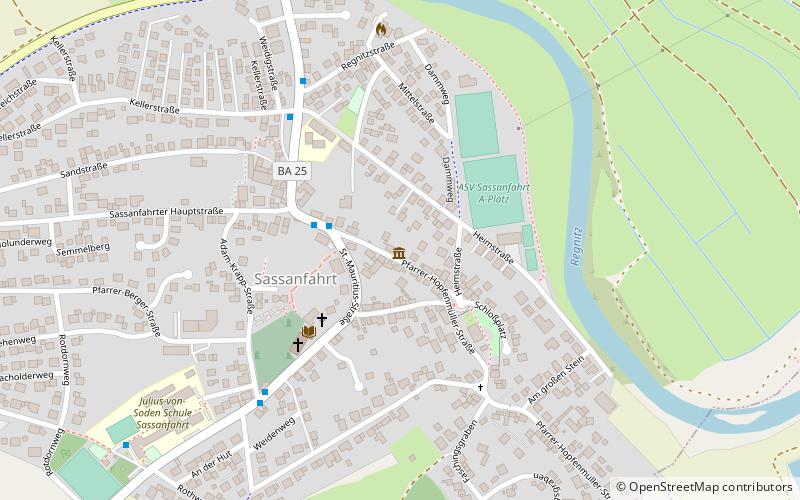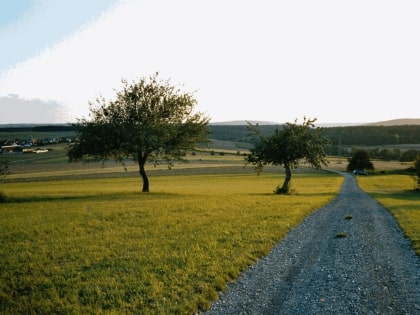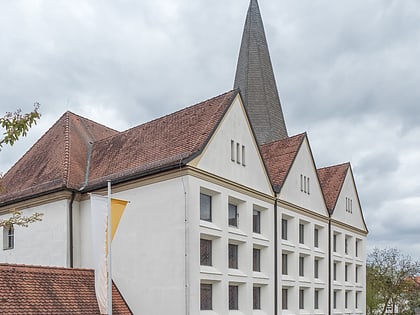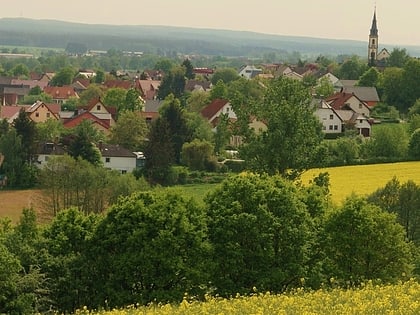Tropfhaus, Hirschaid


Facts and practical information
Tropfhaus or Trüpfhaus is a term from Franconian. They were small houses where the property did not extend further than the water drops falling from the roof, hence Tropfhaus.
The term drip house is in context with other forms of agricultural estates: Hof: a larger estateHalfhof or Gut: a medium-sized estateSelde or Gütlein: a small agricultural estateHaus, Tropfhaus: an estate without land ownershipThese small Tropfhäuser, which usually had no more than 30 m² of living space, were usually the homes of day laborers, small craftsmen and home workers who lived in them together with their often large families. The plots of land were too small to farm for self-sufficiency.
The preserved drip houses are mostly heavily deformed, so that the original extent can no longer be recognized. A large number of drip houses can be seen in Sassanfahrt near Hirschaid, for example, of which there used to be 80 there. In many houses of the village you can still recognize drip houses, some are skillfully modernized, others are preserved in their originality. This can be seen particularly well in the house at Neugartenstraße 1. The best way to see the former living conditions is in the museum of the village.
Tropfhäuser were built by the municipalities, in Sassanfahrt by the owner of the knight's estate Reichsgraf Julius von Soden, or by richer farmers. In the house there was a larger parlor, which served for working, cooking and sleeping. The front door was placed on the side. Behind the house entrance there was still room for a goat or a pig. From the house square the floor stairs led to the attic. There was food and fodder, with more sleeping space in between.
Pfarrer-Hopfenmüller-Str. 7Hirschaid
Tropfhaus – popular in the area (distance from the attraction)
Nearby attractions include: Altenburg, Schloss Wernsdorf, Levi Strauss Museum, Galgenfuhr.











